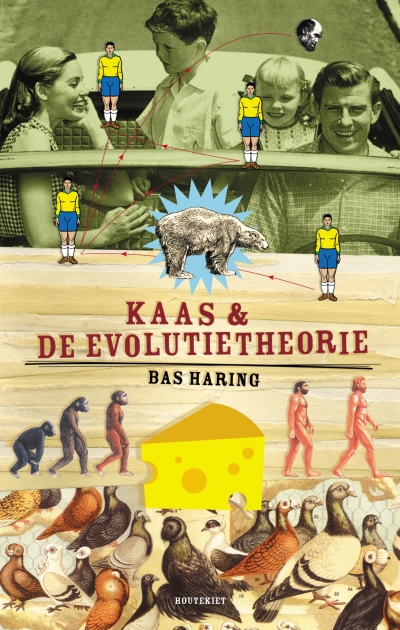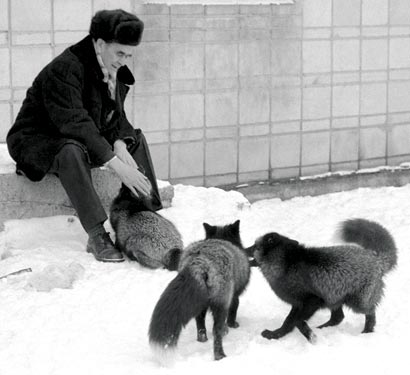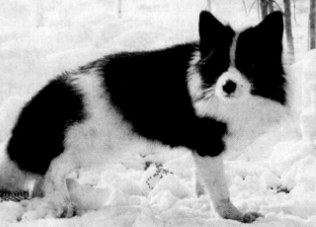


There's a style of computer problem solving called backtracking.
There are several possible variants: Serial, Parallel, find one solution, find all, heuristic.
This method can solve an amazing range of problems.
HOW TO RETURN (route, state) path.to aim:
IF state = aim:
RETURN ("success", route with state)
IF state in route OR NOT safe state:
RETURN ("failure", {})
PUT route with state IN new.route
FOR option IN possible.from state:
PUT (new.route, state altered.for option) path.to aim IN result, route
IF result = "success":
RETURN ("success", route)
RETURN ("failure", {})
In an article I wrote, I used this to solve the Farmer and the Produce problem, the Two Jugs problem, and even the Towers of Hanoi (just for two disks, it found 12 solutions!), but it will also solve the Eight Queens problem, Sudoku, and many others.
Backtracking is comparable to how evolution works

The 3 requirements for evolution:
In early evolution, the only source of variation was mutation, and mutation is only rarely successful, more likely leading to deleterious effects.
Once sex evolved, there was more source of variation.
Which explains the success of sex.
Death is evolution's backtracking, well - death without offspring.
(Later we will see how the definition of offspring has changed).
The environment changes (and therefore redefines success)
This is how species happen.
It is interesting to consider that since cats and dogs have a common ancestor, that common ancestor had two children, one of which was the first cat, and one that was the first dog.
It is also interesting to comtemplate that humans may already have speciated without us knowing it (yet).

An obvious example of the effect of the environment is camouflage.
Which includes anti-camouflage, such as with kingfishers and wasps.

Беля́ев (Belyaev) bred foxes, selecting only for tameness. This had the surprising side-effect of changing how they looked as well:

You can see the accretion of successful genes as a form of learning, or a form of memory (and similar to the 'route' in the backtracking program earlier).

Sugar, Fat: Vitamins vs Calories
Sex being fun
Age differences in couples.
After Sex, true memory was a major development, and allowed learning behaviours: you no longer needed genetic memory to survive, you could use recent outcomes to decide how to act.
Hypnosis experiments show that you may not always be aware of the reasons you do things. You may rationalise them differently to the 'true' reason. [Example from Surely You're Joking, Mr. Feynman! "All the time you're saying to yourself, "I could do that, but I won't"--which is just another way of saying that you can't."]
Some think that there may not even be conscious free will at all, but that we always rationalise after the action.




Long hair
Shaved armpits
The visable manifestations of genes (as affected by environment):
A major development was the development of language.
It allows evolution with planning, memories that last longer than a lifetime.
It creates the concept of Memes, in analogy to genes, carriers of information that may, or may not, help survival.
Houses, umbrellas, washing your hands, ...
An example of a meme that has died: blood letting as a cure.
Having ideas is now just as important as having babies
Engelbart: Augmenting the Collective IQ
McLuhan (The Medium is the Massage):
"The wheel is an extension of the foot, the book is an extension of the eye; clothing, an extension of the skin, electric circuitry, an extension of the central nervous system"
Using memes, not genes.
Repair: Glasses, medicine, hospitals, deafness
Abilities: Houses, cars, planes, boats
Location: Satnav - we were the last generation of people who could get lost; weather radar.
The computer is being used in so many ways to extend our abilities, I can see no other possibility than to regard it as part of our extended phenotype.
Often people don't understand its true effects.
Take a piece of paper, divide it in two, and write this year's date in one half:
Now divide the other half in two vertically, and write the date 18 months ago in one half:
Now divide the remaining space in half, and write the date 18 months earlier (or in other words 3 years ago) in one half:
Repeat until your pen is thicker than the space you have to divide in two:
This demonstrates that your current computer is more powerful than all other computers you have had put together.
(You can use this diagram to demonstrate other things too).
The reason that humans have succeeded so well in comparison with many other life forms is the development of language, and therefore of memes that make us much more flexible in our ability to survive.
Particularly successful memes have caused paradigm shifts in human society, fueling the next generation of memes. Evidence shows that the rate of change of change has been increasing exponentially over hundreds of thousands of years.
Possibly within our lifetimes, we will be confronted with a very interesting time, when we may have to contend with seven new paradigms before breakfast every day.
(The slides are online)